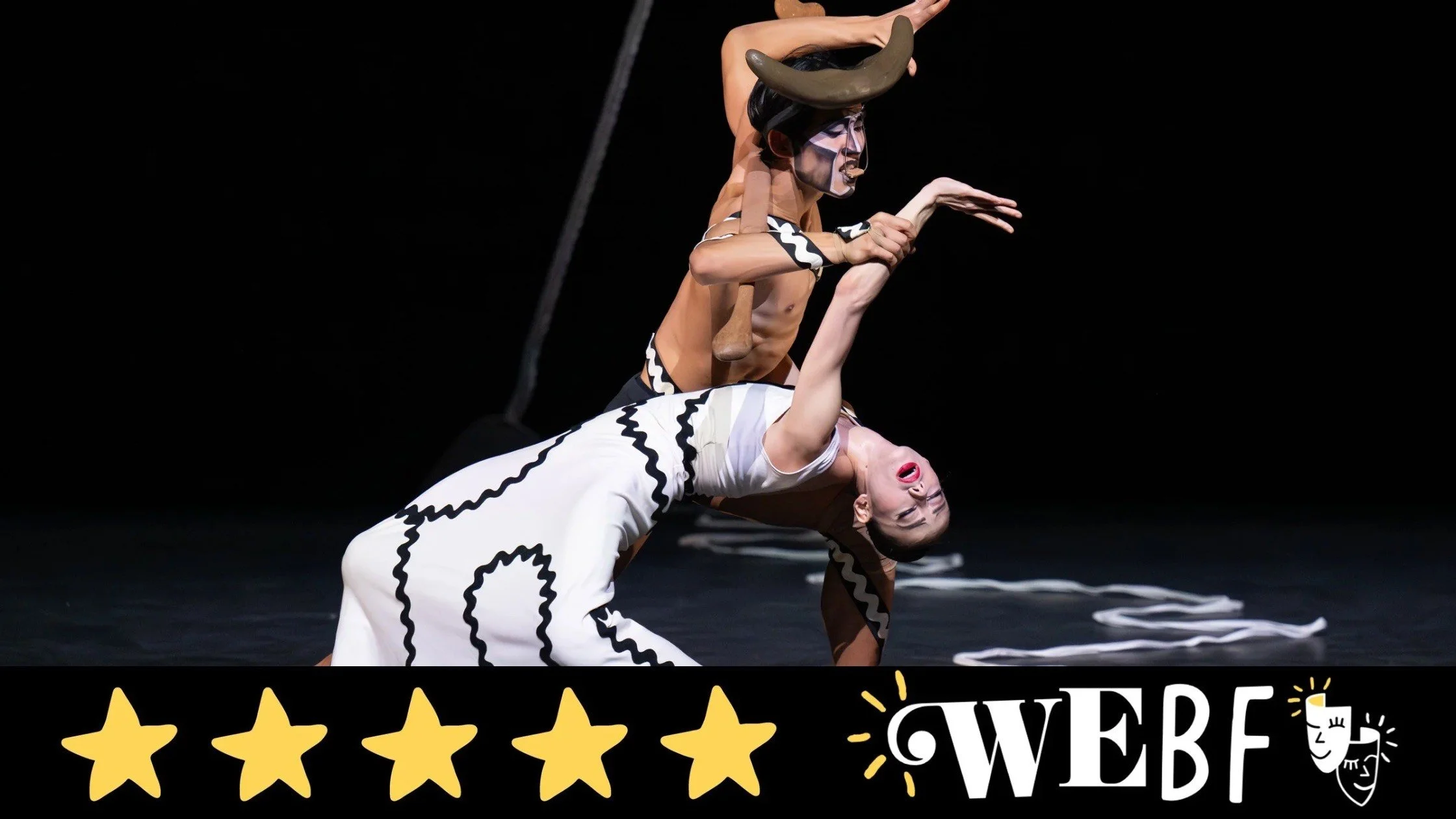Review: English National Ballet’s R:EVOLUTION, Sadler’s Wells
Photo credit: ASH
Is ballet a rigid, unchanging discipline? Over just over two hours, the English National Ballet proves that’s not the case. The performance is divided into four pieces which couldn’t be more different from one another. Yet each is as beautifully performed as the previous, conveying the range of emotions that can be expressed through the power of dance.
The first piece is “Themes and Variations”, choreographed by George Balanchine, which appears to be the most traditional. It evokes a wedding celebration - the principal male and female dancers wear white while the rest of the ensemble are in hues of pink and champagne. With simplistic staging of only three dripping chandeliers against a blue background, audiences have no choice but to pay attention to the spectacle of movement. The piece is set to Tschaikovsky's less recognisable songs which crescendo as the dancers perform elegant lifts and spins. Gradually, the stage goes from only being occupied by one or two dancers to the full 26, rising to a dramatic finish. The dancers somehow make difficult steps look completely effortless as they perform them in unison.
The next piece is a stark contrast. “Errand into the Maze” by Martha Graham is based on the Greek mythology of the Labyrinth, designed to imprison the Minotaur. The set is pitch black aside from a Cheshire-cat-smile moon, a barren tree and a string laid across the stage to suggest the walls of the maze. The dramatic, discordant music by Gian Carlo Menotti creates a sense of unease as the lead dancer, potentially Theseus, battles with the Minotaur, who is eventually slain. An impressive two-hander that encapsulates the famous conflict.
After a short pause, it goes straight into “Herman Scherman (Quintet)” by William Forsythe, which is also set to discordant music created only by one or two instruments. It’s highly percussive and the orange-clad dancers keep to time, switching between choreographed sections by playfully running up and down the stage. It’s a lively, quirky, blink-and-you-miss-it style that has less of a narrative than the former, but all of the impact.
The performance finishes with “Four Last Songs”, which was choreographed by David Dawson in only 2023. The first performer to come on stage is the phenomenal Madeleine Pierard, who sings operatically while several pairs of dancers come on one-by-one. Each wears flesh-coloured lycra that implies nudity, forcing the audience to focus solely on the movement instead of being distracted by the costumes. This minimal costume also affords the dancers a greater range of movement, as they complete gravity-defying lifts, bends and even lie curled up on the floor. The piece is highly emotional, expressing feelings of yearning, love and connection. The four Richard Strauss songs are beautifully performed by the orchestra. R:Evolution is a display of artistic mastery.
R:Evolution: A dynamic journey through the history of ballet from the incomparable English National Ballet.
***** Five stars
Reviewed by: Ruby Skippings
R:Evolution plays at London’s Sadler’s Wells until 11 October, with further info here.


